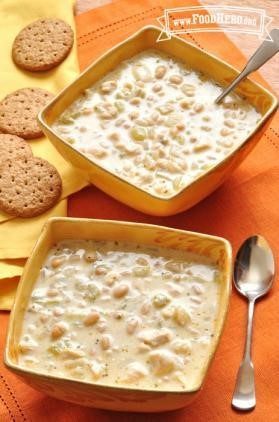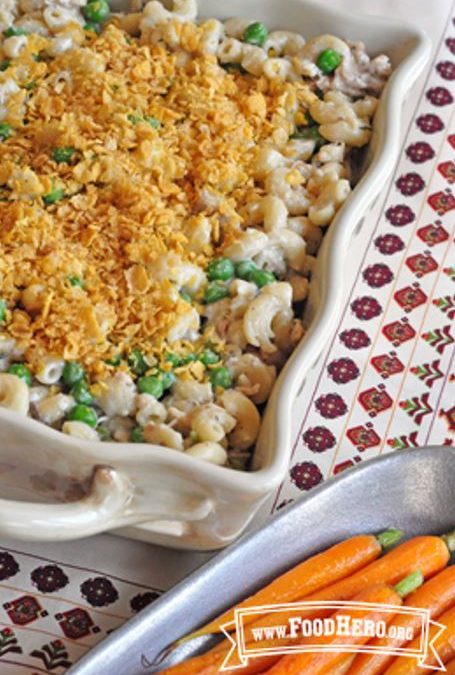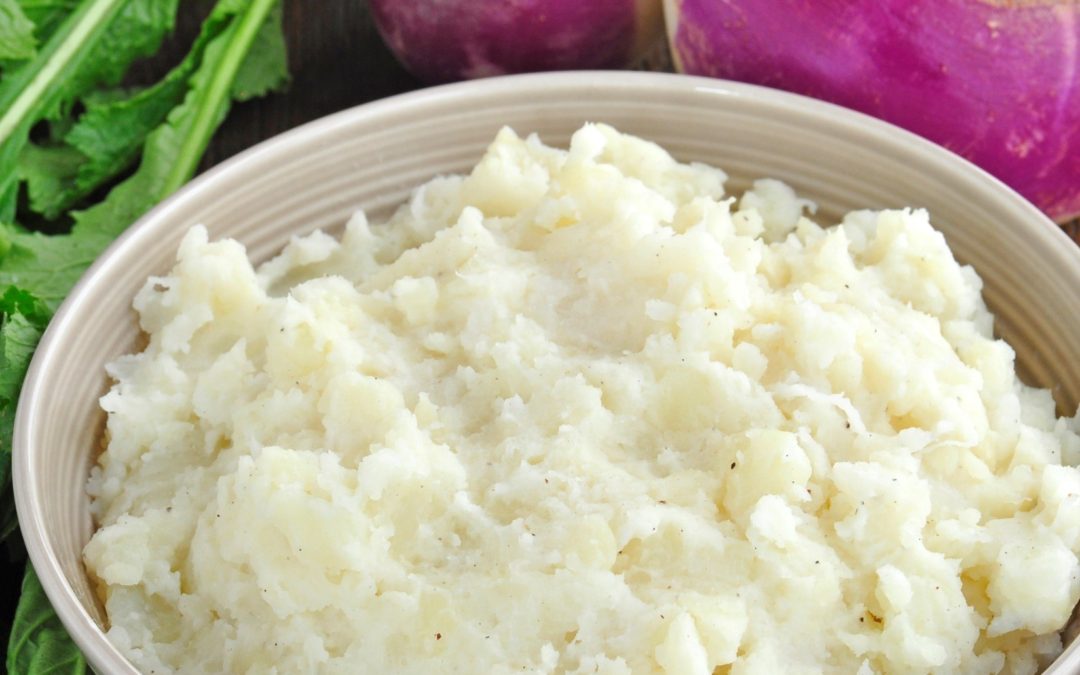
by Michelle | Jan 17, 2020 | Eat Well
By: Michelle Jenck, TC Wellness Coordinator
Tillamook County Wellness is all about making healthy happen in 2020. We are encouraging people to Choose Well – a campaign series that will run throughout the year, providing support and local resources for living a healthier life. To kick things off, we are launching our Eat Well campaign, highlighting specific ways we can improve our eating patterns. As coordinator of our wellness initiative, I am sharing some of my own experience and inspiration for making healthy, restaurant-inspired meals everyone can enjoy.
Our family celebrated the New Year with football and peanut butter, pickle and pineapple hamburgers. This tasty nugget was inspired by a visit to Killer Burger more than a year ago. Other restaurant-inspired foods that have made their way onto our kitchen table include squash soup, roasted Brussel sprouts and kale salad; all foods we would not have considered making at home until we discovered their deliciousness at a restaurant. Much of our inspiration has come from local restaurants like The Creamery, Blue Heron, Pacific Restaurant and Antonette’s, to name a few. You don’t have to eat out to enjoy a good meal that’s also good for you.
Growing up, I didn’t give much thought to how or what I ate. As we began to raise a family, and as I worked toward earning a master’s degree in Health & Kinesiology, my relationship with eating and cooking changed. It was a slow process, motivated by my desire to serve healthy meals to our growing boys. When I understood the role good nutrition played in how their brains developed and how that would help them become better learners in school, it became a major priority for me to prepare and serve healthy food at home.
There was just one problem. The foods my kids liked to eat weren’t very healthy and they turned their noses at the healthy options I tried to serve. It didn’t help that I am really not much of a cook. I had to figure out how to make healthy food taste better. I began to change t my cooking habits based on things our family enjoyed when we ate out.
One of the biggest changes I made was to add more vegetables and flavor to our meals. There are three magical ingredients that worked for us . . . garlic, onion and olive oil. There are very few nights of the week my kitchen does not smell like a combination of these ingredients. It doesn’t matter if we are eating whole wheat spaghetti, chicken stir fry with brown rice or a veggie frittata, I always start with those three ingredients. To this day, that is one of my favorite smells when I walk into a restaurant. And that’s when I knew our family had made the change toward better eating – when my kids came home from sports practice or work and, as they entered the kitchen, would breathe in deeply and say, “Yum, what smells so good?”
There are so many simple tips and tricks that have helped me become a better and more confident cook. It’s taken twenty years and it is still a work in progress. The biggest lesson I have learned is that motivation matters. I didn’t get serious about eating better until I decided to do it for my kids. We’d love to hear from you, whether you are an experienced cook or someone who, like me, entered the kitchen as a reluctant chef. What simple changes have you made to your eating habits and what changes have you noticed as a result? What has motivated you and what barriers have you had to overcome? If you’d like to share your story, reach out to us at tillamookcountywellness@gmail.com and join us in making healthy happen in Tillamook County.
For more local health and wellness information, follow Tillamook County Wellness on Facebook, Instagram and Twitter.

by Guest | Jan 9, 2020 | Eat Well
Thanks to a sponsorship by Tillamook County Wellness partner, Oregon Dairy & Nutrition Council, we are featuring an article and recipe from Judy Barbe, author, columnist and nutrition expert. As a registered dietician nutritionist and food enthusiast, Judy offers realistic food solutions to help people “live their best.”

By: Judy Barbe, RD
Q:
What can you eat to help maintain a healthy weight, reduce blood pressure, improve blood cholesterol levels, and keep your digestion moving smoothly?
A:
Fiber.It’s a super hero!!
Fiber has powerful health benefits. Best known for helping to move food through your body, but this is only one way fiber contributes to good health.
-
Fiber helps you feel full longer. This can help with weight control. Bye bye snack attack.
-
Fiber helps fight heart disease by lowering cholesterol.
-
Fiber helps keep blood sugar stable.
-
Fiber acts like a broom. A big help in preventing constipation and hemorrhoids.
-
People who eat high-fiber foods such as fruits, vegetables, and whole grains are less likely to develop certain types of cancer.
Where do you find fiber?
Fiber is found in plant foods. Beans, nuts, seeds, cereals, fruits and vegetables are the best sources. I want you to spread your fiber wings and try lots of different fiber-filled foods. Fiber isn’t just twigs and branches. It really can be delicious eating.
How Much Fiber?
The daily goal for fiber is 20 to 38 grams for adults 50 and younger. For those over 50, women need 22 grams per day and men 28. No need to quibble over a few grams, but the bottom line is for most Americans it’s a stretch to come close to even half the recommended amount.
Use the Nutrition Facts label and the ingredient list to choose good or excellent sources of dietary fiber.
- Good sources of fiber are at least 3 grams, or 10 to 19% of the Daily Value per serving
- Excellent sources of dietary fiber are at least 5 grams or 20% or more of the Daily Value
10 ways to help you boost fiber
-
Choose a cereal with 4 grams of fiber per serving. Add a sliced banana for 3 more grams.
-
Add extra vegetables to spaghetti sauce such as mushrooms, zucchini, carrots or sweet potato. Add vegetables to noodle dishes like Korean Noodles, casseroles and dips. Artichoke Jalapeno Dip.
-
Start strong at breakfast. You’ll get more fiber from whole-grains (oats or bran flakes), fruits and vegetables than from French toast and bacon. Try Berry Baked Oatmeal.
-
Order extra vegetables on whatever you can.
-
Order split pea soup, lentil soup, black bean soup or beans and rice. All are fiber-rich!
-
When practical, eat the skin on fruits and vegetables (but do rinse them with water). A medium apple with peel = 4 grams fiber, ½ cup applesauce = 1 gram fiber, apple juice = 0.
-
Add vegetables, fruit, hemp seeds, ground flax, oats, or beans to smoothies for a fiber boost. Sip a Cherry Almond Amaranth Smoothie.
-
Speaking of beans, eat beans more often. Beans are one of the best sources of fiber. Make a bean dip or use them in soups, salads, and casseroles like this One-Pot Baked Chicken Greek Stew.
-
Cook a whole grain such as spelt, quinoa or bulgur to add to salads, soups or yogurt parfaits.
-
Make Greek Salad with lettuce with garbanzo beans, tuna, olives, capers, cucumber, tomato, red onion and feta. Drizzle with vinaigrette.
Sip More
As you increase fiber, you also need more fluids to help process the added fiber.
-
Enjoy coffee, latte, tea or water in the morning.
-
Keep a cup or water bottle at your desk.
-
Pack a water bottle while on the road or in meetings all day.
Coconut Fruit Tart is a nice slice to wake up my taste buds and change up my breakfast groove. Bran flakes in a crunchy walnut crust and fruit boost the fiber.

3 cups bran flakes, crumbled
3 tablespoons butter, melted
½ cup chopped walnuts
1 teaspoon ground ginger
2 eggs, room temperature
2 cups plain yogurt
½ cup shredded coconut (I prefer unsweetened, but sweetened works)
1 tablespoon honey
1/2 teaspoon vanilla extract
2 cups chopped fruit (strawberries, blueberries, raspberries, plums, mango)
¼ cup coconut, toasted
1 teaspoon lime zest
Crust
Heat oven to 375°F. While the oven is heating, toast ¼ cup coconut for topping. Spread coconut in a single layer on baking sheet. Bake for 5-7 minutes, until lightly browned, stirring frequently. Coconut is high in fat, so it can easily burn.
In a large bowl, combine bran flakes, butter, walnuts and ginger. Press firmly into a 9-inch tart or pie pan. Bake 12- 15 minutes. Set aside to cool.
Filling
In a bowl, stir eggs to mix well, add yogurt, coconut, honey and vanilla extract. Stir to combine all ingredients. Pour into cooled crust. Bake at 375°F for 25-30 minutes, until filling is set. The center of the tart should be firm and not jiggle when you shake the pan. Remove from oven to cool. Tart may be refrigerated overnight.
Before serving, top with fruit and sprinkle toasted coconut and lime zest over.
Serves 6
Recipe source: Judy Barbe, www.LiveBest.info
Registered dietitian Judy Barbe specializes in realistic food solutions. She is author of Your 6-Week Guide to LiveBest: Simple Solutions for Fresh Food & Well-Being. Visit her website www.LiveBest.info for every day food solutions.
For more local health and wellness information, follow Tillamook County Wellness on Facebook, Instagram and Twitter.

by Guest | Dec 27, 2019 | Eat Well, Recipes
By: Dana Zia
December is bake till you pop month. We all know this. Visions of sugar cookies begin to dance in our heads and brainwash us into baking not just two dozen of them, but 6 or 10 dozen of them to spread the cheer. (Or the waist lines.) In my experience, it is very difficult to avoid all the Christmas cookies and other delights, but there is a way to mitigate the spread by baking lighter and with healthier ingredients.
First off, let’s debunk a myth that can be restricting when you start to experiment with changing your favorite recipes — baking is not an exact science. I know, I know, we’ve all heard how you must be precise in your baking but, I’m here to tell you, I am a first-class experimenter on baked goods and rarely do they totally bomb. Ok, now that we have that cleared up, let’s get experimenting!
One of my favorite simple ways to make a healthier baked good is to replace white flour with whole wheat pastry flour. It will make a slightly chewier cookie that has a bit of a nutty flavor, but I personally like that better. Whole wheat pastry flour is milled from soft white wheat so has a tender crumb, whereas regular whole wheat flour is milled from hard red wheat. Whole Wheat Pastry Flour is a good source of dietary fiber; 28 grams (1 ounce) provides 4 grams of fiber per serving and white flour provides only 1 gram. I also like to add 1/4 cup of flax seed meal or wheat germ and reduce the flour by that same amount for even more fiber. Now that we have more fiber, let’s tackle the fat in baked goods.
Most cookies are high in saturated fats with all that jolly butter that they are baked with. It is very easy to reduce that by replacing half the butter with heart healthy light tasting olive or avocado oil to lower the saturated fat content. Neither you nor Santa will notice the difference.
Another option that works great is to replace half the butter with a fruit puree like apple or pear butter. This makes for a moist and tasty cookie but you will see a difference in the oven, they don’t flatten on their own while baking. To fix this, all you have to do is to squash them with the palm of your hand before baking them. (If you lightly wet your palm before doing it the cookie dough won’t stick to your hand.) Fruit puree replacement lends itself more to cakes, muffins and drop cookies but not so much to cut out cookies.
The last tip I’ll leave you with is simple but effective; make your cookies smaller. We are so use to having HUGE cookies served to us that small cookies seem like a rip-off. Adjust your mind set and cut calories by a remarkable amount just by reducing the size of your cookie. I bought a little mini ice cream scoop and use that size when baking so I keep them small. If you are making cut out cookies, use the smallest cookie cutters you have to limit size.
Here is my favorite light sugar cookie recipe that is delicate of flavor and texture. They tend to puff up a bit when cooking so will be a little different when baking but they are so worth it. Have a very merry cookie season
Light and Lemony Sugar Cookies
Adapted from Cooking light
1 cup of sugar
1/4 cup of butter, softened
1/4 cup of light cream cheese, softened
1 large fresh egg
1/2 of a lemon’s zest
1 teaspoon of vanilla extract
2 cups of whole wheat pastry flour
1/4 cup of wheat germ or flax seed meal
1 teaspoon of baking powder
1/2 teaspoon of baking soda
1/2 teaspoon of salt
First, play your favorite holiday music. (Very important!) Beat the sugar, butter and cream cheese with mixer till soft and fluffy, then add the egg and beat some more. Next add the lemon zest, and vanilla and mix till well blended. In another bowl, mix all the dry ingredients together with a wire whisk till happily combined. Add the dry ingredients together with the sugary ingredients and stir together, by hand or blender, till the dough is well formed. Shape the dough into two disks and tuck in the fridge for a few hours or preferably overnight, to firm up.
When you are ready for the magical cookie making time, preheat your oven to 400 degrees. Roll out one disk on a floured board or between two sheets of wax paper, till about a ¼ inch thick. Cut cookies out with your favorite cookie cutters and place on a lightly oiled cookie sheet. Bake for about 8 to 10 minutes till they are golden brown around the edges and the center is set. Don’t move the cookies for a few minutes while they set, they tend to be a bit fragile when hot. Decorate with icing and festive sprinkles.
Lemon icing
2 cups of powdered sugar
1 tablespoon of low fat milk
1 tablespoon of fresh lemon juice
1 tablespoon of lemon zest
1/2 teaspoon of vanilla
Christmas Sprinkles!
Stir all the above ingredients together in a small pretty bowl till well blended. If it seems a bit thick, add a bit more lemon juice till you get the consistency that you want. Spread the icing on cooled cookies or squeeze through a pastry bag or a small zip lock bag, with a tiny corner cut off. Dust the cookies with your sprinkles immediately so they will stick. Ho Ho Ho!
Nutritional information if you make 20 cookies with icing; calories 125 , fat 3.5 grams, fiber, 2 grams.
For more local health and wellness information follow Tillamook County Wellness on Facebook, Instagram and Twitter.

by Guest | Dec 19, 2019 | Eat Well, Recipes
Photo and recipe source: Foodhero.org
Time for preparation (including preparation and cooking:
Prep time: 20 minutes
Cooking time: 30 minutes
Makes: 8 cups
Ingredients
1 Tablespoon oil
1 pound boneless, skinless chicken breasts, cut bite-sized
1 onion, chopped
1 1⁄2 teaspoons garlic powder or 6 cloves garlic
2 cans (15.5 ounces each) white beans, rinsed and drained
1 can (14.5 ounces) chicken broth (see notes)
2 cans (4 ounces each) chopped mild green chilies
1 teaspoon ground cumin
1 teaspoon dried oregano leaves
1⁄2 teaspoon pepper
1⁄4 teaspoon cayenne pepper
1 cup sour cream
1⁄2 cup nonfat or 1% milk
Directions
Heat oil in a large saucepan; sauté the chicken, onion and garlic until chicken is no longer pink.
Add the beans, broth, chilies and seasonings.
Bring to a boil. Reduce heat; simmer uncovered, for 30 minutes.
Remove from the heat; stir in sour cream and milk.
Refrigerate leftovers within 2 hours.
Notes
Broth can be canned or made using bouillon. For each cup of broth use 1 cup very hot water and 1 teaspoon or 1 cube bouillon.
Instead of chicken use turkey or 2 cups of cooked beans.
Cook your own dry beans. One can (15 ounces) is about 1 1/2 to 1 3/4 cups drained beans.
Notes
Broth can be canned or made using bouillon. For each cup of broth use 1 cup very hot water and 1 teaspoon or 1 cube bouillon.
Instead of chicken use turkey or 2 cups of cooked beans.
Cook your own dry beans. One can (15 ounces) is about 1 1/2 to 1 3/4 cups drained beans.

by Guest | Nov 27, 2019 | Eat Well, Recipes
Recipe and photo source: Foodhero.org
Makes: 8 cups
Prep time: 15 minutes
Cooking time: 30 minutes
Ingredients
2 teaspoons oil
1 small onion, chopped
2 cloves garlic, minced or 1/2 teaspoon garlic powder
2 cups cooked turkey, 1/2inch cubes
2 cupswater
1 cup nonfat or 1% milk
1 can (10 3/4 ounces) cream of mushroom soup
1 package (10 ounces) frozen peas
2 cups dry macaroni
2 teaspoons dill weed
1⁄4 teaspoon black pepper
1 cup corn flakes
1⁄2 teaspoon garlic powder or 2 cloves garlic
1⁄2 cup nonfat sour cream
Directions
- Heat oil in a large frying pan over medium-high heat (350 degrees in an electric skillet) and saute onions until transparent.
- Add garlic and cook briefly, about 30 seconds.
- Add turkey, water, milk, soup, and peas; bring to a boil.
- Add macaroni, dill, and pepper; stir to combine.
- Cover pan, reduce heat to low (225 degrees in an electric skillet) and cook 10-15 minutes until pasta is tender. Stir occasionally to prevent sticking.
- While mixture is cooking, crush corn flakes in small bowl, mix in garlic powder and set aside.
- Just before serving, stir in sour cream and top with corn flake mixture.
- Refrigerate leftovers within 2 hours.
For more local health and wellness information follow Tillamook County Wellness on Facebook, Instagram and Twitter.

by Guest | Nov 22, 2019 | Eat Well, Recipes
Recipe and photo source: Foodhero.org
Number of servings: 5
Time for preparation (including preparation and cooking): 35 minutes
Ingredients:
1⁄2 pound turnips, peeled and diced
1 pound potatoes, peeled and cubed
1⁄4 cup light sour cream or buttermilk
1⁄2 teaspoon salt
1⁄4 teaspoon pepper
1⁄2 teaspoon garlic powder
Directions:
- Boil turnips and potatoes in enough water to cover until tender, 15 to 20 minutes.
- Drain vegetables and mash.
- Stir in sour cream, salt, pepper, and garlic powder. Serve hot.
- Refrigerate leftovers within 2 hours.








